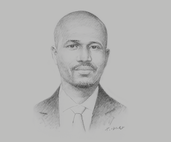Libérat Mfumukeko, Secretary-General, EAC: Interview

Interview: Libérat Mfumukeko, Secretary-General, EAC
To what extent have EAC members harmonised policies ahead of the creation of a monetary union?
LIBÉRAT MFUMUKEKO: During the transition towards the East African Monetary Union (EAMU), the existing exchange rate policies of EAC countries will remain the same. National exchange rates will be market determined, and central banks will intervene to smooth volatility rather than influence exchange rates in the medium term. Additionally, national central banks will continue to implement independent monetary policies.
However, in the lead-up to the EAMU, partner states will need to converge in terms of monetary policy regimes and exchange rate policies. The transition period requires the coordination and harmonisation of monetary policy regimes. This implies that, over time, partner states will need to reform and integrate their monetary policy frameworks. All EAC central banks have so far agreed to move from a reserve, money-based monetary policy framework to a forward-looking, price-based model by December 2018. Viewed from the perspective of preparing the basis for entry to the EAMU, central banks in the EAC have agreed to adopt a common monetary policy communication strategy, a reserve-requirement ratio not exceeding 5% and an integrated East African Payment System. Important steps have also been taken towards harmonising the regulatory environment for financial services.
Meanwhile, domestic tax harmonisation policy, including value-added tax (VAT), excise and income tax, is at an advanced stage. EAC partner states have agreed to harmonise their tax regimes progressively, starting with excise tax by December 2017, and thereafter the VAT. Detailed harmonisation proposals for the excise tax are being finalised.
How has the region been affected by shifts in commodity prices and currency values?
MFUMUKEKO: Despite export prices facing a difficult period due to the recent volatility in commodity prices, overall terms of trade between the EAC and the rest of the world have improved slightly. Much of this owes to the declining prices of oil, which constitutes a bulk of the region’s import bill in the international market. Indeed, the region has recorded sustained positive growth, with real GDP estimated to have grown by 5.9% in 2014, 6.5% in 2015 and 6.1% in 2016, and growth is projected to reach 5.7% in 2017.
The growth has been largely supported by investment in public infrastructure, buoyant private consumption and prevailing low oil prices. In regard to currency values, despite volatility in global financial markets, the region’s foreign exchange markets against major currencies have generally remained stable. The stability has been reflected by a narrowing of the current account deficit, partly due to the reduced value of petroleum imports and resilient diaspora remittances.
What progress have EAC states made towards boosting manufacturing’s contribution to GDP?
MFUMUKEKO: Structural transformation is a longterm goal and does not happen overnight. The EAC is cognisant that structural transformation – and a shift towards value addition and an industrialisation-driven economy – is the most effective way to achieve longterm economic prosperity and stability. Thus, the region is aiming to boost the manufacturing sector’s contribution to GDP to 25% by 2032.
The EAC’s economies need to grow much faster, particularly in manufacturing, to realise these targets. Some countries have posted quite strong overall growth, including Rwanda, Tanzania, Kenya and Uganda. However, even though the EAC’s manufacturing value-added growth rate of 4.7% is above the sub-Saharan average of 4.3%, it is still below our expectations. We are optimistic that with existing infrastructural development programmes, particularly investments in railways and energy-generation programmes, the sector’s growth rate will jump to the desired level of 10%.
You have reached the limit of premium articles you can view for free.
Choose from the options below to purchase print or digital editions of our Reports. You can also purchase a website subscription giving you unlimited access to all of our Reports online for 12 months.
If you have already purchased this Report or have a website subscription, please login to continue.

